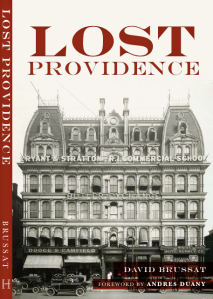
A day or so ago there were comments on my post about Venice having too many tourists, which led to the question of whether tourists would press a bit less on places like Venice and Paris if new places were built with the same charms as the old places. Wouldn’t they be great places to live, and even draw their own tourists? And then, voila! An article about Poundbury showed up in my email, saying that it was indeed drawing tourists.
A marvelous piece by Sophie Campbell, “A toy town for the 21st century,” in the travel section of the U.K. Telegraph describes a Poundbury that anyone would want to see, not to mention live in. She says it has even become a sort of travel destination for tourists, who “jump up and down trying to see over the walls” of the charming little houses.

I read paragraph after paragraph by Campbell about how wonderful Poundbury is. It is a new town in old styles developed next to Dorchester by Prince Charles. So I was startled to read Campbell’s admission: “My own feelings about Poundbury are mixed. I find it deeply disappointing that it is not contemporary in style – but Dorset friends point out that “trendy” design wouldn’t sell in the country.”
One must give her credit for her objectivity in not denying or camouflaging its appeal as so many of her fellow journalists have done over the decade or so since Poundbury was initiated. The “toy town” headline was obviously written by a member of that self-infatuated, intellectually blinkered group of people. But it simply wouldn’t be what it is, as lovely as it is, as profitable as it is, if it were in a contemporary style. Campbell continues:
Pastiche doesn’t bother me per se; I think that our horror of fake is snobbery, not aesthetics, and the Noddy feeling will wear off as the place matures (it will be another 10 years before all four building phases are finished). Overall, I reckon hats off to Charlie: he could have washed his hands of the land; instead he is trying to achieve something that, in a quaintly old-fashioned way, is truly radical.
“Pastiche” is a word usually used by modernists to cast aspersions on new traditional architecture. For her to use that word exposes, by itself, how deeply sunk she is in passé attitudes. Which makes her article all the more admirable, if not downright courageous. I assume she’s received blowback from her colleagues. Hats off to Charlie indeed! She then adds:
One unexpected problem is tourism. There is no hotel or bed and breakfast in the village, and residents hesitate to run private tours for fear of upsetting their neighbours. The Duchy blanched when I suggested mentioning a phone number. They said readers should write in for information on the regular official tours.
Ah, that’s what I love to hear. My only criticism is that, to judge by the photos seen on Google with a “poundbury” search, they could plant more trees. Still, I’d love to go there myself. For those who can make the trip, here is the information attached to the end of Campbell’s article:
The Prince’s Foundation website features Poundbury and similar developments: www.princes-foundation.org. Bus no 31 from High West Street in Dorchester drops you just outside the village.
-
Dorchester Tourist Information Centre (01305 267992, www.westdorset.com).
The Duchy of Cornwall and the Residents’ Association run tours of the village. Apply to Middle Farm, Poundbury, Dorchester, Dorset DT1 3RS.





Hello
LikeLike
I visited Poundbury – a 3 hour train ride from London – well worth the effort. Very inspiring and convincing. Agree with trees missing but maybe a cultural thing? Simple elegant authentic architecture, superb intimate urbanism compact walkable traditional village. Makes so much sense that it’s extremely radical.
LikeLike
Check out this article from the Guardian – normally a cheerleader for modernism.
https://www.theguardian.com/artanddesign/2016/oct/27/poundbury-prince-charles-village-dorset-disneyland-growing-community
LikeLike
Pingback: More on Poundbury alive | Architecture Here and There